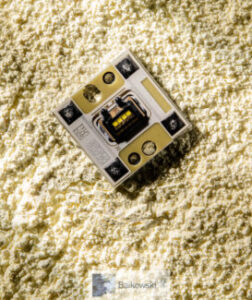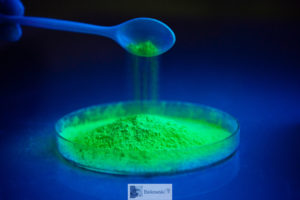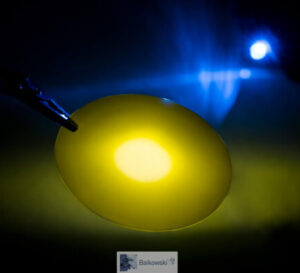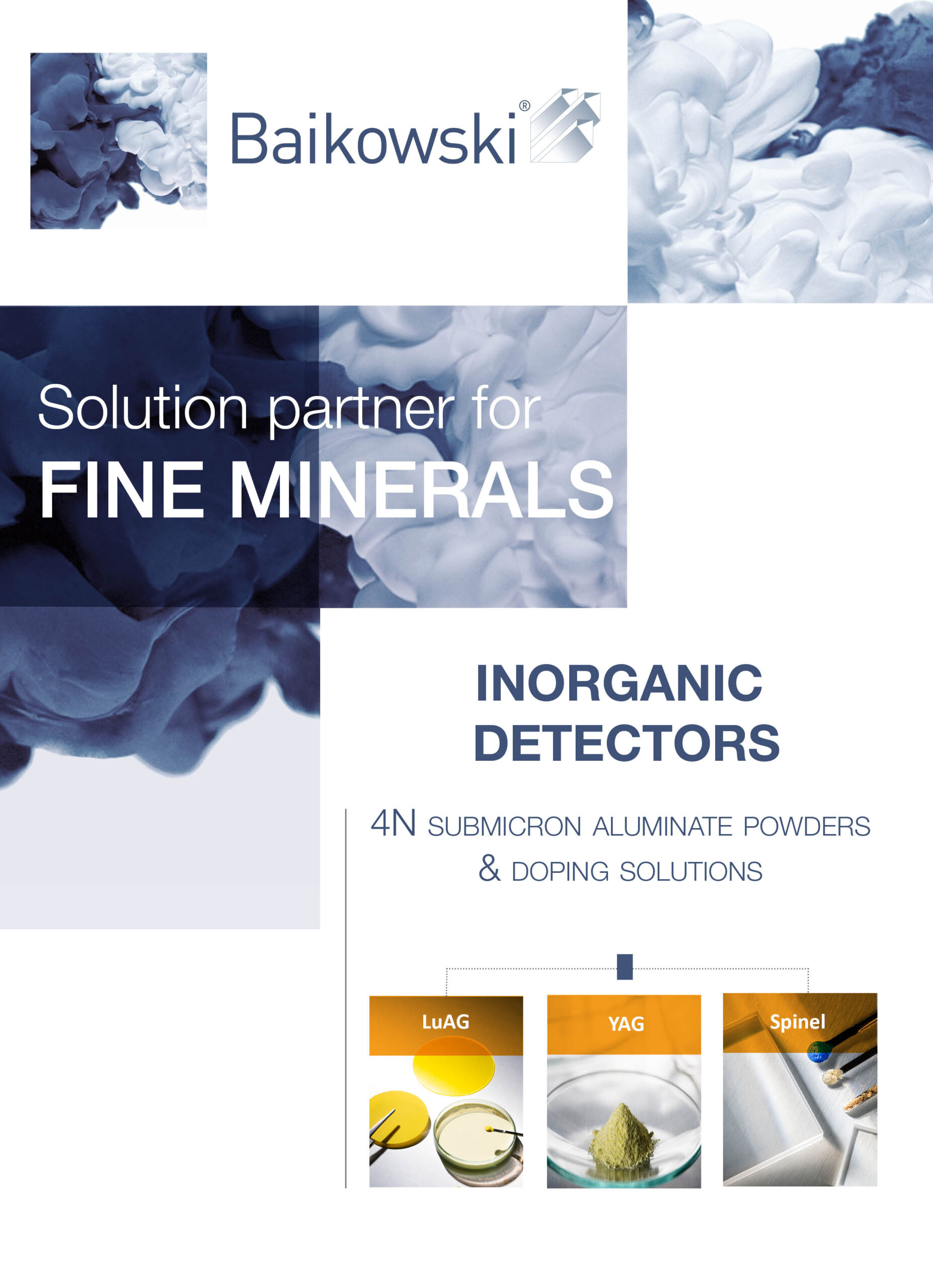🔬 How YAG Optimize Wavelengths for LED, Laser & Imaging Applications ?
Light conversion phosphors are advanced oxide powders used to shift the emission wavelength of LEDs, lasers, and imaging devices. Baikowski® offers high-purity submicron phosphor solutions for lighting, Adaptive Driving Beam (ADB) (ADB), displays, medical imaging and analytical detection. Our materials are engineered for maximum quantum efficiency, optical stability, easy dispersion, and tailored doping to meet your specific light conversion needs.
How does light conversion happen with phosphors?
Firstly, find a few definitions in order to understand what is the light conversion. Then, find a focus on inorganic luminescent materials: the phosphors.
Visible light gathers all the electromagnetic waves that are detected by human vision. In the vacuum, the visible spectrum is between 380nm and 750nm.

A Light-Emitting Diode, mostly known as LED, is an electronic device that emits light when crossed by an electrical current. The semiconductor (heart of the LED) emits in a narrow spectrum. That is why the LED often ranks as a “monochromatic” emitter. There are mainly UV and blue native LEDs.
The light conversion happens when a wavelength is transformed into another wavelength or more. The light conversion occurs either by a mix of powders dispersed in a matrix, or a ceramic convertor. Baikowski® provides Phosphors, designed for high performances of conversion. We dope our nano-phosphors with Cerium for blue LED conversion. We can also add other dopants upon request.

What are the Benefits & Properties of Baikowski phosphor solutions?
Our phosphors show outstanding properties for various applications:
- Unlike polymer matrix, ceramic converters allow high temperatures into the system. They provide very few alterations of the conversion and optimize diffusion. That is why ceramic converters are essential when it comes to high power LEDs and lasers.
- Embedded phosphors could require nanoscale material in order to answer the needs of new semiconductor design emerging (3D LED for example).

In addition, Baikowski’s YAGs and LuAGs show:
- High crystallinity
- Chemical purity
- Optimized distribution of activators within the lattice. It optimizes optical properties (quantum efficiency…)
- Submicronic control of particle size & particle size distribution. Thus, you will obtain a dense ceramic at low sintering temperature with the finest microstructure (low thickness & controlled light diffusion).
View light conversion phosphors related products
Can Baikowski® customize phosphor powders with tailored doping systems?
Moreover, we formulate YAGs and LuAGs products to unique customer requirements with a variety of dopants such as:
- Nd, Cr, Er, Yb… for laser applications
- Ce, Pr, Gd… for ceramic light converters & encapsulated phosphors
How does Baikowski® improve the processability of its phosphor solutions?
We provide nanophosphors and specialty powders for light conversion. Baikowski® products reach a high sintering reactivity without sintering aid. We make sure that activators are homogeneously distributed in the garnet lattice, in order to target maximum quantum efficiency.
Moreover, our powders adapt easily to the customer process:
- Hot Pressing & HIP (Hot Isostatic Pressing)
- Tape casting
- Slip casting
- Ceramic inkjet printing…
What are the main Applications of light conversion phosphors ?

You can find light conversion phosphors in multiple applications, such as:
- High-power LEDs for automotive
- Lasers for wavelength conversion properties (undoped YAG)
- UV coatings in fluorescent tubes
- LEDs for display
Learn more in our white paper and explore how our advanced materials can enhance the precision and reliability of your detection systems..
👇
Discover all our White Papers

